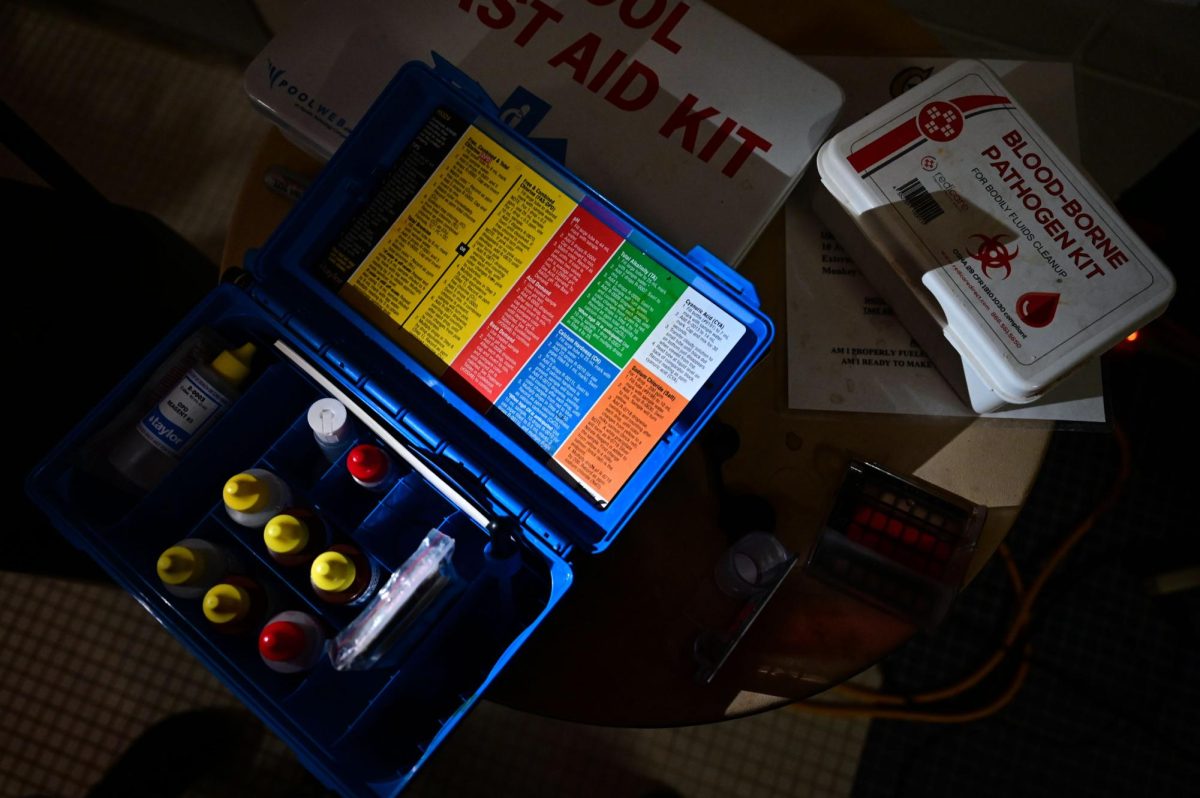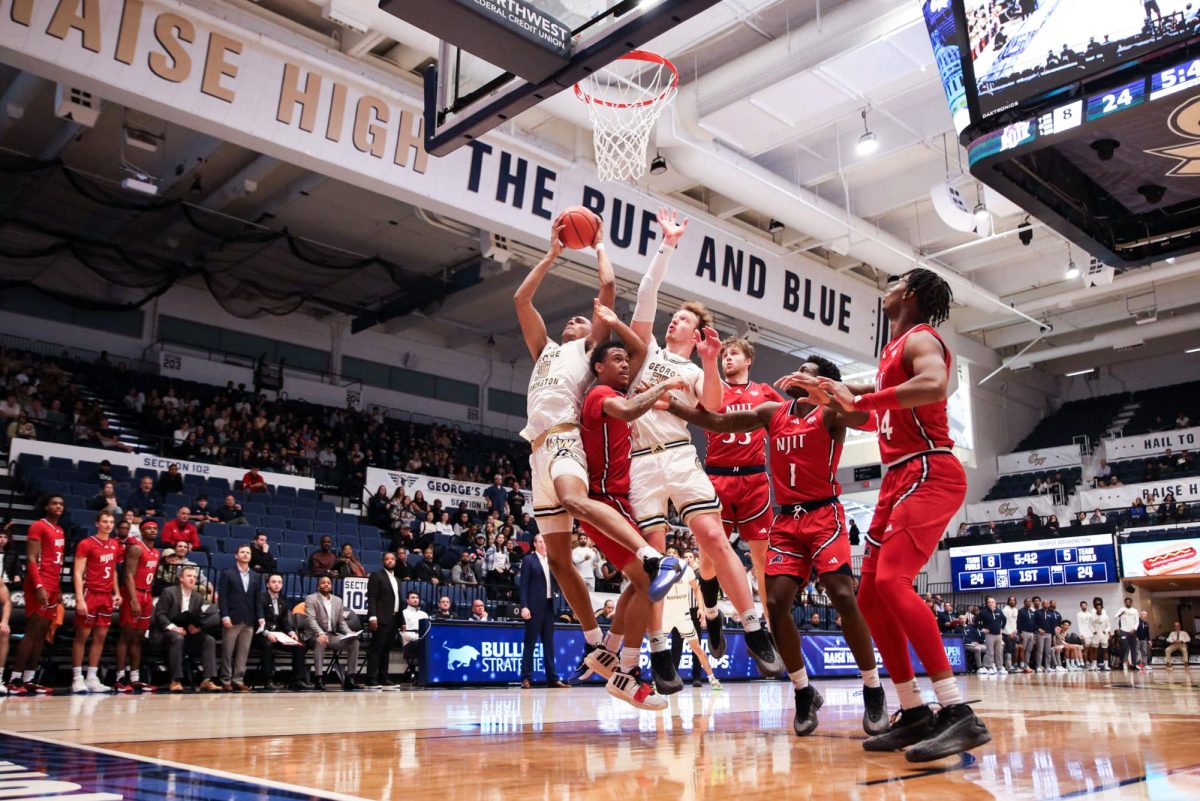From the opposite walls of the pool, both teams swim to center court and dive in the water, racing to beat the other to the bottom, flippers flailing in a fight for possession.
A peek under the surface reveals a scene more often observed on top of frozen water: a mad scramble for a puck, quick passes across the floor and shots aimed at a net. But skates and helmets have been replaced by flippers and snorkels – crucial pieces of equipment for the club underwater hockey team. And there’s an added challenge to the game: breathing.
“You’re not just playing on one plane,” junior Matt Burkert, who founded the club in 2009, said. “You don’t just have to worry about where you are in relation to everybody else, but you have to worry about where you are in relation to your lung capacity.”
The object of the game is to maneuver a three-and-a-half pound plastic puck underwater along the bottom of the pool, aiming to score in the opponent’s sunken basket at the opposite end of the pool. Teams of three players use a snorkel, a diving mask, flippers and gloves caulked with silicone to withstand hand-to-hand combat with opponents.
With miniature plastic sticks in hand, players move as a pack to the puck. They glide gracefully over and under one another, popping up only for a quick breath of air and then submerging once again until a goal is scored.
Players said they have seen other underwater hockey players swim four to five lengths of the pool without coming up for air, but the ability to stay underwater for a long time is moot if the player does not score a goal or make a deciding play for the team. Sophomore Stephanie Anderson, vice president of the team, knows firsthand the challenges of playing underwater.
“I have asthma and when I first started out playing,” Anderson said, “I had bad asthma attacks during the games and was always out of breath.”
Burkert likens the sport to soccer because of the importance of maintaining possession first and scoring goals second. Unlike ice hockey, there is not a rush to score once possession is gained. At the same time, Burkert holds that underwater hockey is unique because of the specific muscle groups used and the difficulty and time associated with scoring a point.
Injuries are another challenge for players, who frequently experience scraped knees, toes and sides. Junior Loreto Pantano, member of and treasurer for the team, has sustained multiple injuries, including a sprained shoulder in one of his first games. He points to a scar on his left knee as another indicator of how rough the sport can be.
“I know guys whose sides, right here, will be bloody within ten or fifteen minutes. It can get pretty rough. You can get hit in the face with the puck. I mean a lot of things can happen,” he said. “It’s not a gentle sport.”
The team competes mostly in local tournaments, but Burkert hopes it will become the “next big water sport” so that there will be more teams to compete against and a larger fan base. A benefit of it being relatively unknown is an emphasis on casual play rather than cutthroat competition, he added.
“We try keeping the fun of this sport in it as well as being competitive,” Burkert said. “But at the same time you can’t be so competitive that you lose sight of the ideals of why you’re playing, which at the club level is definitely to have fun.”






